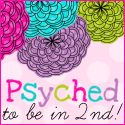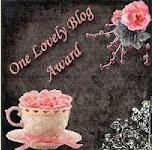I'm linking up again with Denise. I'm so proud of myself for sticking with this linky somewhat consistently.
This week's "My Truth" entry pretty much speaks for itself. Those eyes!!! Hello Handsome!
This morning, as I'm sure many of your schools did, my school put on a lovely Veterans Day program. It's always so nice to host the veterans at our campus and thank them for their service. It's also really cute seeing them with their elementary school students. :-)
I know that I've promised a post about our work we've been doing in 2nd grade on American celebrations, and it's coming. Today, my students presented their products to me. I could not be more proud. Now that I've assessed them, we will take it a step further and present to a kindergarten class later this week. After that, I'll be able to fill you in on what they did, complete with pictures of their work. I didn't have time to watch presentations, ask questions of my students, AND take pictures of their work today...it just couldn't be done.
This post feels really rushed and scattered, and it is. I'm really ready for bed. However, I've continued working on my self-assigned book study, and I must say, I'm really starting to get into this book.
Chapter 5:
- This chapter provided an overview of the management of guided reading. I must say I was intrigued by the example of independent activities in a 2nd grade classroom that was provided at the beginning of the chapter. (Students read a self-selected book, write a response in their journals, and then share their response with a friend. Rinse. Repeat.) I feel like the appeal of this is that it lines up really well with the Daily 5 and The Book Whisperer's ideas.
- Next, a variety of activities for students to engage in while the teacher meets with guided reading groups was presented. I use the Daily 5 in my classroom, but I did find several of the options interesting. I like the idea of browsing boxes. These are basically like my book boxes right now, except in addition to good fit books, browsing boxes include guided reading books with which the student is familiar.
- Other ideas I liked were buddy reading (like Read to Someone), reading journals, and literature circles.
- The chapter ended with some possible schedules and an emphasis on teaching students management/routines so that they may be independent while the teacher meets with groups of students. The one takeaway I have from this, as always, is that these professional books are quite utopian in their views of time available. 150 minute schedules, at least an hour of which is devoted to guided reading?! What about tutoring? What about make-up work for absent students? What about re-teaching/re-testing? How much time do you spend meeting with guided reading groups daily? What does your ELA block schedule look like? How do you find time for tutoring, make-up work, and the many other demands placed upon teachers while still fitting in guided reading daily?
Okay, sorry to drop off in the middle of nowhere, but it's bedtime. Tomorrow night, I'll be attending the PTA meeting at school, then participating in a Twitter chat, so things at this blog will probably be pretty quiet. See you later this week!

























